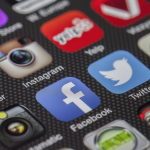In March, the U.S. Supreme Court will determine the extent of permissible federal interactions with private-party decision-making – namely, by social media platforms. The issue is portrayed as a clash between First Amendment rights and public health. This is not a new conundrum, but the involvement of social media is upping the ante. Further complicating the issue is the fact that the platforms acquiesced and voluntarily cooperated with governmental involvement, and while they are the object of the federal “incursions,” the social media platforms are not the aggrieved parties in the case.
first amendment
With rare exceptions, the right to free speech is exceptionally broad. Exceptions focus on imminent and irremediable harm, like shouting fire in a crowded theater or child pornography. You are even allowed to lie – as long as no one’s reputation is injured. But what if the feds want to constrain those attacking government actions because those attacks are dangerous and endanger public health? The Fifth Circuit said no go. The Supreme Court weighs in this March.
Even as cigarette manufacturers can no longer escape liability for addiction-inducing practices, social media (SM) companies hide behind the First Amendment and The Communications Decency Act (CDA) to protect themselves. A recent case dents this shield. But the decision still protects some SM activities - even those allegedly engendering addictions in teens. I disagree with the Court’s reasoning. Here’s why.
A host of societal problems are associated with social media (SM): Amongst other ills are the dissemination of anti-vax disinformation; being purveyors of anti-Semitic tropes; and fostering narratives resulting in teenage suicide, anxiety, and depression. Until now, host platforms have enjoyed broad protection from legal action –even when dangerous ramifications surface. That may be about to change.
Confessions of a Climate Scientist
Hunting
Real or lab-grown, we’re talking diamonds now
Can we really know the intent of others?




